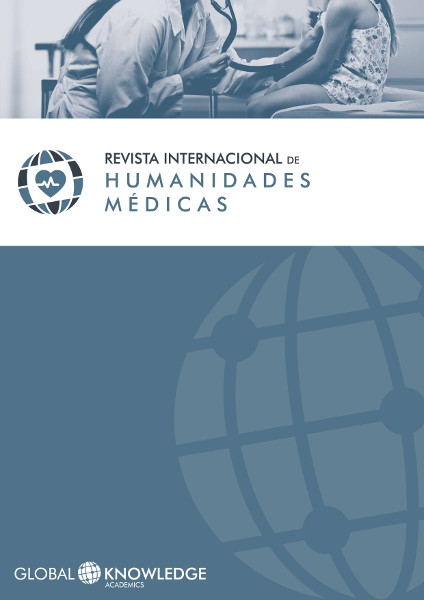Curing the Passions: Construction of the Physician Persona in the Late Eighteenth Century
DOI:
https://doi.org/10.37467/gka-revmedica.v1.1296Keywords:
Physician, Passions, Intimacy, Authority, EthicsAbstract
The aim of this article is to discuss some features of the physician’s figure in the European context in the late 18th and early 19th Centuries. Two documents are analyzed: dissertations dealing on the influence and treatment of passions as phenomena related to illness, whose authors (Clément-Joseph Tissot y William Falconer) use their discourses to present themselves as bearers of a key ethical function, the emotional regulation of (sick) people. The hypothesis claims these therapeutical practices that unfold the power of the physician beyond the body reaching moral life have been crucial for the understanding of the strengthen of the physician’s scientific persona as outcome of a genealogical process. This process implies some medical theories about the body functioning and the techniques of a scientific beholder and the constitution of a kind of authority grounded on this knowledge and on the growing of an intimacy between physician and patient.
Global Statistics ℹ️
|
88
Views
|
55
Downloads
|
|
143
Total
|
|
References
Borsay, A. (2004). “Falconer, William (1744-1824)”. Oxford Dictionary of National Biography. Oxford University Press.
Cabanis, P. J. G. (1802). Rapports du physique et du moral de l’homme . Paris: Badouin.
Casado, C. y Colomo, R. (2006). “Un breve recorrido por la concepción de las emociones en la filosofía occidental”. A Parte Rei. Revista de Filosofía 47, 1–10.
Daston, L. y Sibum, O. H. (2003). “Introduction: Scientific Personae and their Histories”. Science in Context 16 (1/2), 1–8.
Delpit, J. F. (1820). Dictionnaire des sciences medicales , vol. 47 [article “reaction”].
Falconer, W. (1788). A Dissertation on the Influence of the Passions upon Disorders of the Body. London: C. Dilly and J. Phillips.
Falconer, W. (1795). An Account of the Use, Application and Success of the Bath Waters in Rheumatic Cases. London: W. Meyler.
Foucault, M. (2008). Le gouvernement de soi et des autres: Cours au Collège de France (1982-1983). Paris: Gallimard.
Galeno. De propiorum Animi Cuius Libet Affectuum Dignotione et Curatione . [Trad. ingl. (1963). Galen on the passions and errors of the soul. Ohio: Ohio State University Press]
Gérard, A. (1974). La carrière mouvementée d’un officier de santé: Clémement-Joseph Tissot (1747-1826) . Paris: Société Française d’Histoire de la Médecine.
Hegel, G. W. F. (1977). Lecciones sobre historia de la filosofía . México: FCE.
Huneman, P. (2008). “Montpellier Vitalism and the Emergence of Alienism in France (1750-1800), The Case of the Passions”. Science in Context 21 (4), 615–47.
Jackson, S. W. (1999). A History of Psychological Healing. New Haven/London: Yale University Press.
Laín Entralgo, P. (1983). La relación médico-enfermo . Madrid: Alianza.
Mauss, M. (1938). “Une catégorie de l’esprit humain: La notion de personne. Celle de ‘moi’. Un plan de travail”. Journal of the Royal Anthropological Institute of Great Britain and Ireland 68, 236–81.
Pagella, P. (1977). “A Physician in Search of Glory: Joseph Clement Tissot (1747-1826)”. Ann Osp Maria Vittoria 20 (1-6): 84–90.
Platón (2008). Cármides. [Trans. cast., Diálogos I. Madrid: Gredos, 327–68]
Pomata, G. (2005). “The uses of Historia in Early Modern Medicine”, en Pommata, G. y Siriasi, N. (eds.), Historia: Empiricism and Erudition in Early Modern Europe (pp. 105–46). London: The MIT Press.
Pose Varela, C. A. y Borrell Carrió, F. (2012): ”Evaluación de tecnologías sanitarias: factores emocionales en la toma de decisiones”, Revista Internacional de Humanidades Médicas 1 (1), 29-40.
Smollett, T. (1993). The Expedition of Humphry Clinker . University of Georgia Press.
Sill, G. (2001). The Cure of the Passions and the Origins of The English Novel. Cambridge: Cambridge University Press.
Tissot, C. J. (1798). De l’influence des passions de l’âme dans les maladies, et des moyens d’en corriger les effets, Paris/Strasbourg: Amand-Koenig.
Downloads
Published
How to Cite
Issue
Section
License
Those authors who publish in this journal accept the following terms:
- Authors will keep the moral right of the work and they will transfer the commercial rights.
- After 1 year from publication, the work shall thereafter be open access online on our website, but will retain copyright.
- In the event that the authors wish to assign an Creative Commons (CC) license, they may request it by writing to administracion@edulab.es









